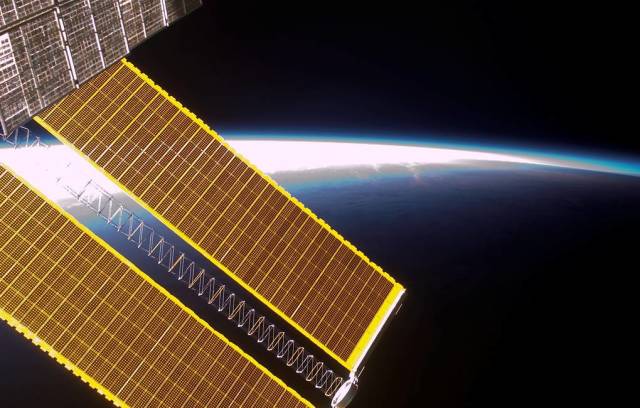They are capable of working in outer space for a long time
TASS, June 6. American physicists have used molybdenum selenide, a promising two-dimensional material, to create durable, lightweight and highly efficient solar cells capable of operating in outer space for a long time. The results of the first experiments with these power supplies were disclosed in an article in the scientific journal Device.
"Gradually, we come to realize that two-dimensional materials based on halogen compounds are very promising for the development of photoelectronic devices that are maximally adapted to work in space. In particular, the solar panels we have created are about a hundred times lighter than their counterparts based on silicon or gallium arsenide," said Deep Jariwala, associate professor at the University of Pennsylvania in Philadelphia, whose words are quoted by the press service of the magazine.
In recent years, scientists have created a large number of new types of solar cells based on various organic compounds and nanostructures, which significantly exceed their silicon and gallium-arsenide analogues in terms of efficiency. These power supplies are widely used on Earth, but most of them cannot be used in space due to the fact that they quickly fail.
Scientists have found out that solar cells created on the basis of another new material, a two-dimensional form of molybdenum selenide, are deprived of this disadvantage. In the past, scientists have already tried to use it to create solar panels, but the efficiency of such power sources in all cases turned out to be very low, about 2-6%, which prevented their use in practice.
Long-lasting and ultralight solar panels
American physicists managed to increase this figure to 12% due to the fact that they managed to calculate as accurately as possible the behavior of exciton quasiparticles arising inside a two-dimensional material when it is irradiated with light. Scientists call excitons a combination of an electron and a "hole", a region with a positive charge that occurs inside a material after the electron occupying it is knocked out by a particle of light.
Jariwala and his colleagues calculated how quickly electrons and "holes" connect to each other, which usually leads to the formation of a flash of light and to the loss of energy by the solar battery. The results of these calculations allowed scientists to choose a solar cell architecture in which the "holes" and electrons were separated as efficiently as possible, as a result of which the efficiency of a solar battery based on molybdenum selenide increased several times.
Thanks to this, prototypes of solar cells created by scientists on the basis of this two-dimensional material have achieved a record specific energy output exceeding 100 watts per gram of solar cell matter. This distinguishes these power sources favorably from semiconductor solar cells already used in space, which require tens and hundreds of times more mass to produce similar amounts of energy.
According to the researchers, they are now working on creating technologies that would allow assembling such power sources not manually, as Djariwala and his colleagues do, but printing large three-dimensional structures from multiple layers of two-dimensional materials and electrodes. The solution of this problem will allow mass production and use of lightweight and efficient space solar panels based on halogen compounds, physicists summed up.

